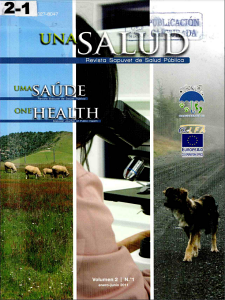Abstract
The aim of this study was to identify and quantify the species of parasites that pet dogs and cats of children in primary school age from three state schools in the north zone of Lima, Peru, presented. For this purpose, fecal samples were collected from 131 dogs and 49 cats of both sexes and different ages. The samples were analyzed by the spontaneous sedimentation technique in tube (TSET) and direct examination. Besides it was collected information about potentially hazardous practices in the child - pet relationship through an epidemiological survey. In dogs, 20.6% were positive to Toxocara canis, 7.6% to Giardia sp., 4.6% to Diphylidium caninum and 0.8% to Diphyllobothrium pacificum. In cats was reported 14.3% positive to Toxocara canis, and 2.0% to Ancylostoma sp. Regarding the relationship between children and their pets, from 124 respondents, 79.0% mentioned that children kissed their pets and / or allowed pets to lick them, 82.3% shared food with their dogs and 88.7% didn’t regularly deworm their pets. In addition, 28.2% of the respondents mentioned that the pets slept in the same room as the child, 66.9% reported that the pet defecated inside the house and 29.0% have observed worms in the their pet stool’s. Due to the zoonotic importance of the parasites found, it is required to be established a health education program, in order to prevent the possibility of infection with zoonotic parasites in this population.Downloads
Download data is not yet available.



